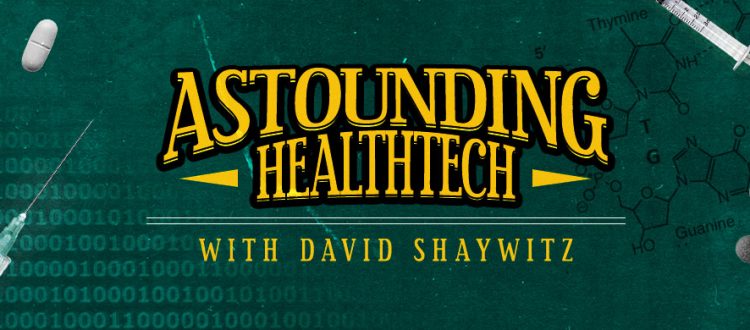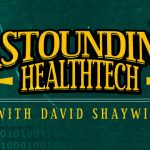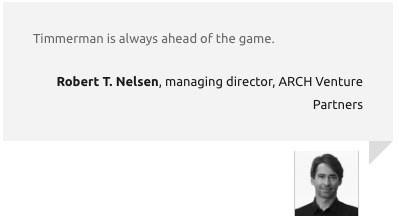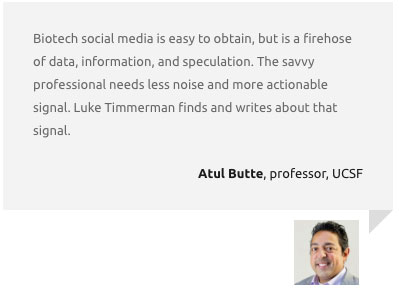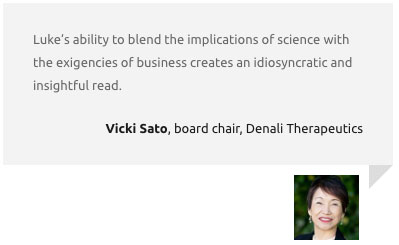The Future of AI and Health, Part II: Andreessen and Colleagues Weigh In
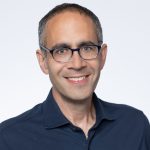
David Shaywitz
Part I of this series is here.
Over its 15 years of existence, the Andreessen Horowitz (“A16z”) venture capital firm has evolved from a media-savvy disruptive upstart to an exceedingly well-heeled incumbent and powerful force in Silicon Valley and the country.
In April 2024, the firm announced a gargantuan $7.2B (with a “B”) fund. For a typical VC firm with a “2 and 20” compensation structure that pays the VC a 2 percent annual fee for assets under management and a 20 percent share of the returns on investment, this would translate to $144 million annually in management fees alone, even if the firm didn’t generate any positive returns (which it apparently does).
That’s a lot of kombucha. As Nate Silver points out in On the Edge (a book I discussed in TR in August, 2024), a16z’s reputation helps it recruit top founders, leading to a positive feedback loop, which Andreessen tells Silver is “sort of a self-fulfilling prophesy.”
A16z made its first real splash with the Aug. 20, 2011 publication of Marc Andreessen’s essay “Why software is eating the world,” advancing the thesis that most every business was going to become a software business. This thesis proved both resonant and prescient. It positioned A16z as the VC firm that seemed to understand and could explain where technology was headed.
On Apr. 18, 2020, in the midst of the pandemic, Andreessen’s effort to follow this up with a new call to action, “It’s time to build,” seemed to fall comparatively flat.
Three years later, Oct. 16, 2023, Andreessen attracted considerable attention with his publication of the “Techno-optimist manifesto,” advancing his perspective that technology makes life better for humanity, so let’s not impede this progress with ignorant regulation (my reaction in TR in October of 2023 is here).

Marc Andreesen
In July 2024 Andreessen and firm co-founder Ben Horowitz, “both longtime Democratic givers…stunned the tech world” by endorsing Trump, the New Yorker’s Susan Glasser reported, adding that Horowitz subsequently announced “a significant donation” to the Harris campaign. In recent months, Andreessen has spent time with the President, seeking to influence national priorities on a range of technology and economic issues.
What does this have to do with biotech and healthcare? A16z has an abiding interest in biomedicine, represented by their “Bio+Health” vertical, which seeks to introduce tech innovation into these sectors, based on the firm’s tacit (and at times, not so tacit) conviction that they understand tech, and the future of tech, better than anyone.
In early January 2025, Eli Lilly and A16z announced the establishment of a $500M “Biotech Ecosystem Venture Fund,” paid for by Lilly (thank you, Zepbound…), co-managed by both organizations, and focused on what A16z Bio & Health partner Vineeta Agarwala describes as “bleeding-edge technology,” Stat’s Matthew Herper reports.
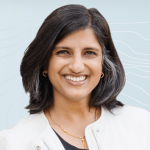
Vineeta Agarwala, general partner, A16Z Bio & Health
In keeping with A16z’s pursuit of thought leadership, the firm offers many (many) podcast episodes focused on the intersection of technology and health. Occasionally, these can feel like efforts to improve healthcare through the earnest application of tech analogies – the term “full stack” makes an appearance in nearly every episode. Most of the time, however, these discussions are engaging and informative – and never more so than when Andreessen himself is featured.
One of the more thoughtful conversations I’ve heard about AI and health emerged from recent A16z podcast (imperfect transcript here) featuring Andreesen, who was joined by Bio+Health general partners Vijay Pande and Julie Yoo. Their discussion topic – “Can Tech Finally Fix Healthcare?” – could have been cribbed from the title of the 2013 book Lisa Suennen and I wrote, “Tech Tonics: Can passionate entrepreneurs heal healthcare with technology?”
To be sure, listening to the three tech VCs discuss solutions to healthcare woes inevitably evokes the famous SNL “Bill Swerski’s Super Fans” sketches (“Coach Ditka versus a hurricane: who would win?” “Ditka! Ditka!”) except that instead of Ditka, the response is invariably “AI!”
Reflexive embrace of AI aside, the discussion touches upon several themes of likely interest to TR readers:
How AI enters health: The route “might not be tools,” Andreessen suggests, but rather “almost like the equivalent of hiring workers, full stack.” (Buzz!)
Yoo agrees. “The allocation of revenue within health care enterprises that goes towards technology or IT, as they would call it, has been an order of magnitude smaller in health care than other peer industries,” she points out, adding that AI is increasingly “packaged” or conceptualized as “labor units,” raising the possibility of tapping into the much larger HR budgets at healthcare organizations, rather than the IT budgets.
In health systems, Pande suggests, AI might start with “subclinical nursing and primary care. Then inching into clinical primary care, I think, would not be that crazy to imagine. Essentially, AI could be a great router.”
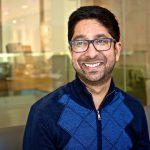
Vijay Pande, general partner, A16z Bio & Health
He continues, “especially if you think about what a primary care physician has to do, they have to ingest all this data and make a diagnosis and then send to a specialist. That’s increasingly literally becoming a data science problem.”
Where AI might struggle: Andreessen highlights “Morevac’s paradox,” which I sometimes think of as the technology version of the classic Gilligan’s Island joke: “What’s the deal with the professor – he can figure out how to turn a coconut into a radio but he can’t fix a hole in a boat?”
Look at technologies like ChatGPT, Andreessen says.
“They will paint art for you. They will compose music for you. They will debate, like, abstract philosophy for you. They will explain quantum physics to you, but they can’t pack your suitcase. They can’t clean your toilet, they can’t cook you lunch. They can’t do anything that a normal person operating in the world can do.”
He adds, “The more abstract, intellectual, knowledge-driven, data-driven, the task, the easier it is to get the AI to do it. The more applied, the physical, messy, unpredictable, the sort of all the human elements are probably the hardest thing.”
(This may be an opportune time to point out that that the most challenging – and rewarding — parts of medicine involve these pesky “human elements,” and incidentally, nowhere is this more true than in primary care.)
Pande notes that a challenge for AI in the physical world is that “it has nothing to learn from,” in contrast to the digital world.
Andreesen offers that the “Tesla self-driving car might be the reason for optimism here.” He points out that Tesla:
“tried different approaches to AI, and it turned out the thing that worked was basically put a neural network in the wild, embodied in the form of a car, and in fact, embodied in the form of a million cars, and then let those cars drive around and collect the data and learn about reality.”
He adds, “The more you take the rules out of the system, and the more you just expose it to the real world and let it gather the data and let it build up the neural network, the better it gets at self-driving.”
Big picture considerations: Andreessen places healthcare in a select group of industries, that also include education, housing, and law/government, that he says exhibit flat or negative productivity growth – we’re doing less with more, rather than more is less.
In healthcare, specifically, he asks how is it that “we have some of the best doctors in the world. We have the best technology in the world. We pay the most and we have the worst outcomes. How is that possible?” (I’ve recently discussed this disconcerting paradox in The Bulwark, see here.)
The fundamental culprit in all four problematic domains, Andreessen believes, is the combination of constrained supply (due in large part to excessive regulation, he says) and subsidized demand.
“The political system is totally unable to deal” with this challenge, Andreesen argues, concluding (wait for it…), the answer “has to come from the private sector, and it has to come from the introduction of disruptive technologies.”
He points to television sets as a “case study in the opposite direction,” an example of what can happen when the markets are allowed to work, and technology is liberated.
“The price of television sets has crashed as the quality has exploded,” he says. “You’re going to have a flat panel TV and 32K resolution that’s going to cover your whole wall. It’s going to cost $100, but yet it’s going to cost you a million dollars to send your kid to college.”
Enhancing the agency of healthcare consumers: Andreessen argues that “in healthcare from here on out … the existing system, left to its own devices, is going to degrade further and further. It’s going to give worse and worse results, at higher and higher cost over time. As a consequence, some percentage of people are going to try to break out of that.”
This creates an opportunity, he believes, for companies that meaningfully help patients take control of their health and give them enhanced agency.
(As I will discuss in Part III, I couldn’t agree more strongly with the emphasis on agency, the contributions of agency to health, and the opportunities for technologies to enhance agency and sustain or improve health.)
Yoo points to the emergence of agency-enhancing technologies that are “totally dislocating the price curve.”
Pande then offers what I found to be the most resonant observation of the entire discussion:
“What we’re really providing patients is agency … this sense of agency is starting to really grow. Where people have this ability to monitor their health and then do something about it and then repeat. And that cycle, actually, I think, works for a lot of people. And being in control of your health feels very different than being at the mercy of a system.”
Thinking About Change. Citing Amara’s Law, Andreesen explains that “changes in technology take a lot longer to happen than you think they will, but when they happen, they have much more consequence than you think. They’re much more dramatic than you think.” (I discussed the arc of technology adoption in TR, here in June 2023.)
Andreesen notes that doctors have been famously frustrated by patients coming in with printouts from Google searches, and says this phenomenon is only going to grow, as patients have more sources of information. Not everything they dig up will be valid, he acknowledges, but notes “there are going to be things that actually work,” and these will spread.
(These sentiments, aligned with Pande’s focus on technology’s ability to enhance patient agency, have been strongly echoed by such leading lights as Carey Goldberg and Zak Kohane, who have emphasized (as discussed in TR in August, 2023) the opportunities generative AI has created for patient empowerment. We will return to the theme of agency in Part III of this series.)
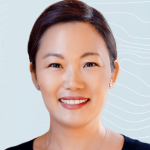
Julie Yoo, general partner, A16Z Bio & Health
Yoo notes that physicians are also leveraging emerging technologies, citing social media as one example. (OpenEvidence, an AI tool I discussed in TR in October, 2024) stands out as well.)
The bottom line, Andreesen argues, is that while the talking heads may debate whether “a new technology is good or bad, and should it be adopted or not, those are all beside the point. Because the fact is, young people are just going to use what’s helpful and useful and they’re not going to have the emotional reaction. And I think that that will apply to many of the things that we’ve been talking about.”
Andreessen’s point about the adoption of technology is correct, though it’s hardly confined to the young (an enduring bias of some of Silicon Valley’s most experienced leaders; hopefully more will consider the data presented in books such as Ali Tamaseb’s Super Founders, as discussed in TR here in April 2021).
Practitioners of all ages are astutely attuned to new approaches that offer palpable benefit, particularly once they see colleagues productively utilizing these tools. The rapid adoption of non-invasive prenatal testing is one example; the recent embrace of OpenEvidence is another (I’ve reviewed both in TR, here in October 2024).
Continue to: The Future of AI and Health, Part III: Improving Health By Enhancing Agency

